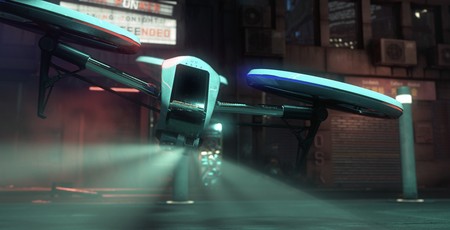Crytek makes AMD-compatible ray tracing benchmark public
November 14, 2019 | 13:40
Companies: #crytek

Crytek has released to the public its Neon Noir real-time ray tracing demo as a benchmark that makes the rendering technique available on all modern graphics hardware – including those produced by AMD that do not feature any dedicated ray tracing cores like Nvidia RTX hardware does.
Neon Noir was first demonstrated back in March, ostensibly as a means of showcasing a new version of CryEngine 5.5’s Total Illumination feature. The kicker, of course, was that it was recorded running on an AMD Radeon RX Vega 56 graphics card, a powerful GPU but not one which features any dedicated ray tracing hardware. The implication was that real-time ray tracing was perfectly possible on existing hardware with more traditional render pipelines and didn’t require investment into the RTX ecosystem as Nvidia would have you believe.
As of today, users can now put this to the test, as Neon Noir has been released as a benchmark to assess your hardware’s capabilities when it comes to running the CryEngine’s new ray tracing feature. Users can set the technique to Ultra, whereby the ray tracing elements are rendered at the same resolution as the scene, and Very High, where the elements are rendered at a lower resolution and presumably combined with some additional post-processing for the final scene. It also comes with a set of recommended minimum specifications:
- AMD Ryzen 5 2500X CPU / Core i7-8700
- AMD Vega 56 8 GB VRAM / Nvidia GTX 1070 8 GB VRAM
- 16 GB System Ram
- Win 10 x64
- DX11
Those are still fairly high-end specifications, so it seems the technique still requires some fairly meaty hardware, but that’s hardly surprising. It’s interesting to note that the technique is compatible with DirectX 11, a less “close-to-the-metal” API than either DirectX 12 or Vulkan, which are the APIs typically needed to achieve real-time ray tracing. It is this that allows Crytek to describe its technology as ‘both hardware and API agnostic’.
The technique Crytek uses (detailed here) is mesh-based and allows reflections and refractions to be created, with the focus being placed on ‘very reflective’ surfaces, so it’s rather selective in nature. It does not, at least currently, allow for ray tracing to create ambient occlusion or soft shadows, so it’s also more limited in scope than what you can get in DX12 and Vulkan. Crytek is also on record as saying that ‘RTX will allow the effects to run at a higher resolution,' so it seems users with RTX hardware will still benefit from the intended purpose of accelerating real-time ray tracing.
Those wanting to give the demo a go themselves can head here and grab the 4.35GB download. A forum thread for users to post scores in has also been created.
Ray tracing is expected to ship as a feature of CryEngine in 2020. No games using the technique have thus far been confirmed.

MSI MPG Velox 100R Chassis Review
October 14 2021 | 15:04








Want to comment? Please log in.